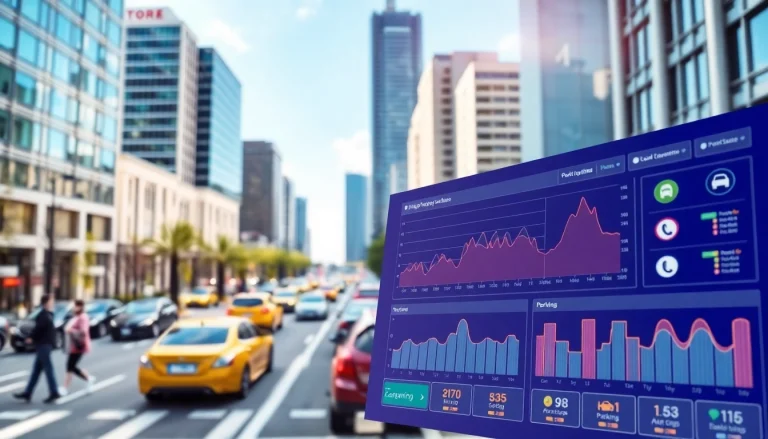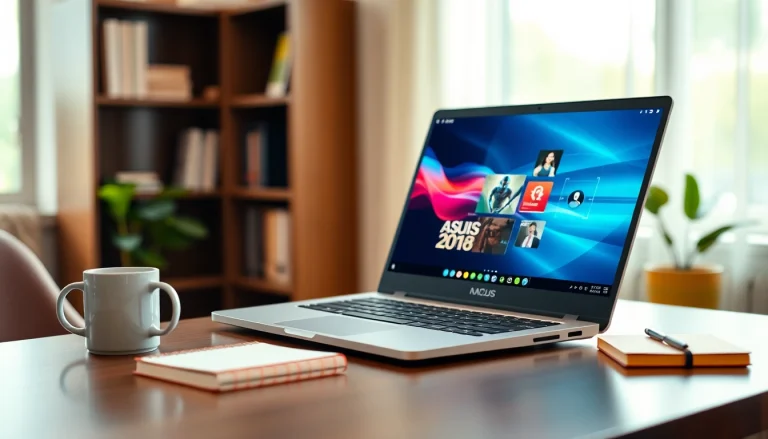
Understanding the Perfect Webinar Script Framework
What is a Perfect Webinar Script?
A Perfect Webinar Script serves as a structured guideline for presenters aiming to effectively communicate their message during a webinar. It encapsulates key components that facilitate engagement, build interest, and ultimately drive conversions. The script is crafted to guide the presenter through a seamless flow of information, encouraging interaction and ensuring that the audience is not just passive listeners but active participants. The outline emphasizes storytelling, compelling offers, and clear calls to action.
The concept originated from successful online marketing tactics, where a well-organized presentation could mean the difference between a struggling launch and a profitable venture. By leveraging the Perfect Webinar Script, presenters can set the stage for not just sharing their expertise but also converting leads into customers. For those seeking to maximize their webinar capabilities, understanding the intricacies of a Perfect Webinar Script is essential.
The Importance of Structure in Webinars
A well-structured webinar is paramount for several reasons. First, it helps the presenter maintain focus, guiding them through essential topics without veering off course. A coherent structure allows for a logical progression of ideas, making it easier for the audience to follow along. Additionally, a structured approach fosters an environment where viewers are more likely to engage, as they can anticipate what comes next and remain attentive throughout the presentation.
Moreover, when the content is structured effectively, it enhances retention rates. Viewers are more likely to remember key points if they are organized in a way that builds upon one another. This not only aids understanding but also encourages future engagement with the presenter, whether through additional webinars, social media, or further purchases of their products or services.
Core Elements of the Perfect Webinar Script
The core elements of the Perfect Webinar Script revolve around several critical components:
- Hook: Grab audience attention immediately. This could be an intriguing question, an interesting fact, or a relatable story that sets the stage for what’s to come.
- Introduction: Provide a brief overview of the presenter’s credibility and connection to the topic. This builds trust and authority.
- Content Delivery: Break down the main content into digestible sections, incorporating storytelling and case studies to illustrate points effectively.
- Offer Presentation: Clearly articulate what the audience can gain. This includes presenting an attractive offer that compels action.
- Call to Action: Encourage immediate engagement with a clear, concise call to action that outlines the next steps for the audience.
These elements combine to create a compelling narrative that not only delights but also converts the audience into engaged participants.
Crafting Your Perfect Webinar Script
Identifying Your Audience’s Needs
The first step in crafting an impactful Perfect Webinar Script is understanding who your audience is. This includes determining their demographics, interests, pain points, and what solutions they are seeking. Conducting surveys, studying analytics, and analyzing feedback from past webinars can provide valuable insights into your audience’s needs. Tailoring your content around these needs ensures that your webinar resonates, making it more likely for attendees to stay engaged and convert.
Consider creating personas that define different audience segments. This helps in customizing the webinar message to speak directly to each segment’s preferences and challenges. The more specific you are in addressing their needs, the more effective your webinar will be.
Building Compelling Narratives and Hooks
Humans are hardwired for stories. A well-crafted narrative can capture attention and elicit emotional responses, making complex concepts easier to understand. Begin your webinar with a hook—this could be a suspenseful story, a shocking statistic, or a personal anecdote related to the topic. The goal is to create curiosity and give the audience a reason to stay engaged.
Develop narratives that embody real-life scenarios, challenges, and solutions. Doing so helps your audience visualize themselves within the story, thereby increasing empathy and relatability. For instance, if your webinar is about marketing strategies, share a story about a client’s significant challenge and how your strategies led to a breakthrough!
Incorporating Actionable Takeaways
A successful webinar not only entertains but also educates. Incorporating actionable takeaways ensures that viewers leave with tangible skills or knowledge they can apply immediately. This could be tips, strategies, or resources that align with the broader theme of the presentation. Always remind attendees about these key takeaways to reinforce learning and encourage implementation.
Consider using bullet points or segments within your script to clearly outline these action items. Presenting real-world examples of others applying similar strategies can illustrate effectiveness and motivate the audience to take action themselves.
Enhancing Engagement During Your Webinar
Interactive Techniques to Involve Your Audience
Engagement is a two-way street. Integrating interactive techniques during your webinar can keep participants involved and interested. Polls, quizzes, and Q&A sessions can encourage real-time interaction, making your audience feel like active contributors rather than passive observers.
Incorporating chat features where participants can voice their thoughts or questions can also create a dynamic atmosphere. This not only builds community but increases the likelihood of participants remembering your content later. Aim to interject opportunities for interaction throughout your presentation and not just at the end.
Utilizing Visuals and Multimedia Effectively
Visual aids significantly enhance the understanding and retention of information. PowerPoint presentations, infographics, and videos can effectively complement your script. Ensure that your visuals are professional, high-quality, and relevant to the topic being discussed. Avoid overcrowding slides with text; instead, use visuals to complement your narrative.
Implementing multimedia elements, such as short videos or sound bytes, can also serve to illustrate points powerfully. Remember, a webinar that pleases both the eyes and ears enhances the overall learning experience.
Encouraging Real-Time Feedback and Questions
Creating an environment that welcomes questions builds rapport and encourages deeper understanding. Plan designated intervals throughout your webinar for Q&A sessions. Consider using software that allows attendees to submit questions in real time, keeping the webinar flow intact while still engaging the audience.
Encouraging feedback allows participants to express their thoughts and feelings about the content. This not only enhances their engagement but may offer you insights into their views, which can refine your future webinars.
Measuring the Success of Your Webinar
Key Performance Indicators to Consider
To gauge the success of your webinar, it is crucial to track several key performance indicators (KPIs). These can include registration and attendance rates, engagement levels during the presentation measured by polls or interactions, and conversion rates, which indicate how many viewers took the desired action, such as signing up for further information or making a purchase.
Additionally, qualitative feedback through post-webinar surveys can provide insights into how attendees perceived the value of your presentation. This comprehensive view aids understanding of what worked and what can be improved in future iterations.
Using Feedback to Improve Future Webinars
Your audience can provide invaluable insights on enhancing future webinars. Post-webinar surveys should be short yet thorough, focusing on aspects such as content relevance, delivery effectiveness, and engagement opportunities. Analyzing this feedback helps pinpoint strengths to leverage and weaknesses that need addressing.
Implementing iterative improvements based on this feedback cycle can dramatically increase the quality of your presentations over time. Moreover, openly addressing feedback shows the audience that their opinions are valued, thereby fostering loyalty and ongoing engagement.
Analyzing Attendance and Conversion Metrics
Besides direct feedback, evaluating attendance and conversion metrics is essential. If a sizeable number of attendees registered but failed to show up, it may indicate that your promotional strategy needs adjustments. Developing engaging promotional content and targeting the right audience can significantly impact your attendance rates.
For those who attended, observe how many took the intended action—whether that was signing up for a newsletter, purchasing a product, or engaging in follow-up activities. Analyzing these metrics provides clarity on the effectiveness of your messaging and overall presentation.
Advanced Tips for Perfecting Your Webinar Delivery
Practicing Delivery Techniques for Better Engagement
The delivery of your script is just as crucial as the content itself. Practicing your delivery allows you to fine-tune your pacing, tone, and intonation—elements that significantly influence audience perception. Record yourself rehearsing to identify areas for improvement, such as reducing filler words or varying your tone for emphasis.
Consider seeking constructive criticism from peers or mentors who can provide valuable insights from an audience’s perspective. Their feedback can help you adjust your delivery for better engagement.
Adapting Your Script in Real-Time
Even the best-prepared presenters must be ready to adapt. Audience engagement levels can fluctuate during a webinar, which may require adjustments. If you notice a dip in interest or engagement, be prepared to switch gears, whether that means diving deeper into a topic, addressing audience questions, or introducing a more interactive segment.
Flexibility in your delivery ensures you can meet your audience’s needs dynamically, enhancing the overall effectiveness of the webinar.
Refining Your Presentation Skills Over Time
Lastly, honing your presentation skills is a continual process. Regularly review past webinars, analyze what worked well, and where you can improve. Attending other webinars can also offer insights and inspiration, as you can learn from different presentation styles and methods.
Continuous improvement in presentation delivery fosters confidence, enhances audience connection, and elevates overall success in your webinars.






